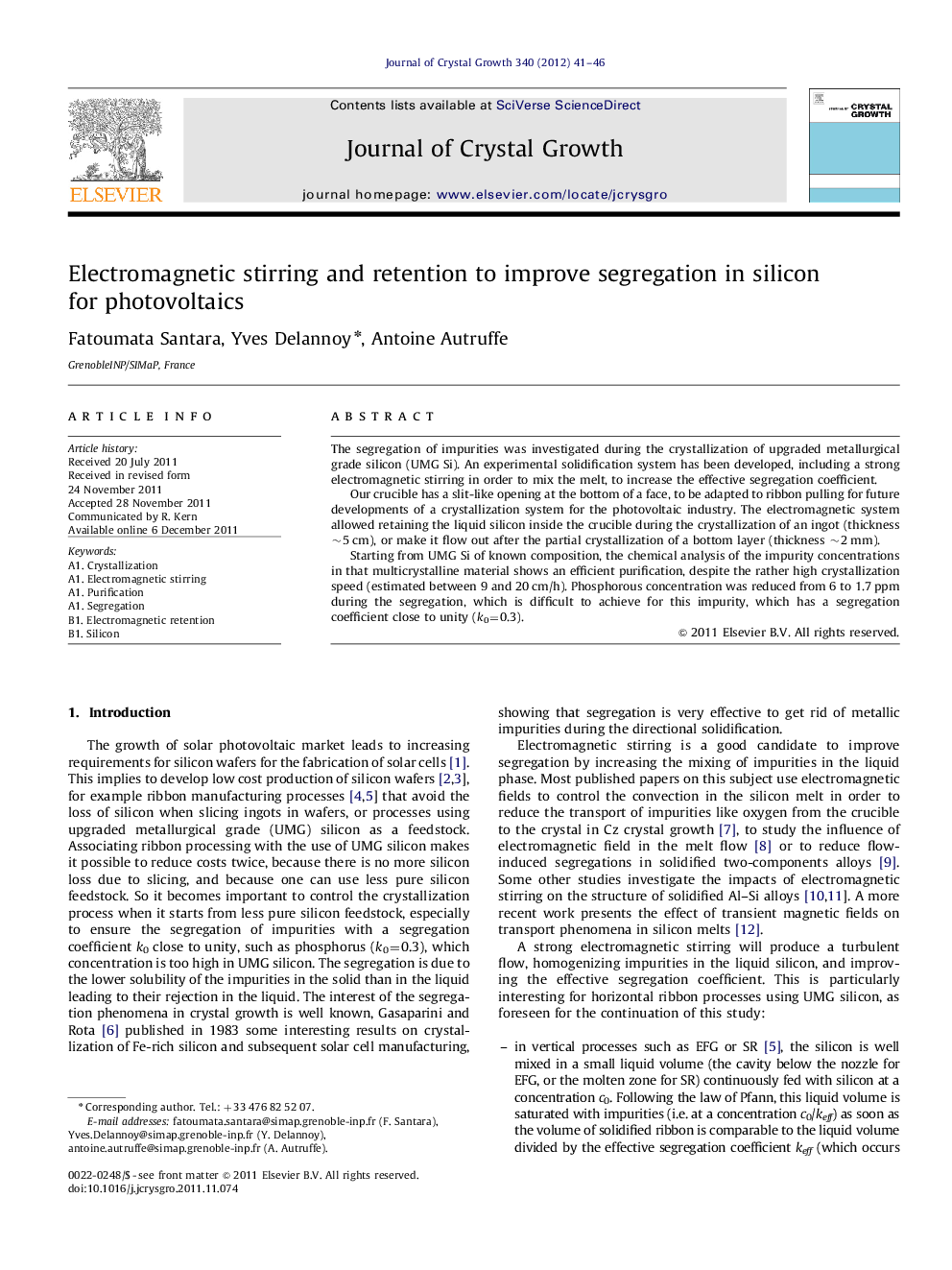| Article ID | Journal | Published Year | Pages | File Type |
|---|---|---|---|---|
| 1792008 | Journal of Crystal Growth | 2012 | 6 Pages |
The segregation of impurities was investigated during the crystallization of upgraded metallurgical grade silicon (UMG Si). An experimental solidification system has been developed, including a strong electromagnetic stirring in order to mix the melt, to increase the effective segregation coefficient.Our crucible has a slit-like opening at the bottom of a face, to be adapted to ribbon pulling for future developments of a crystallization system for the photovoltaic industry. The electromagnetic system allowed retaining the liquid silicon inside the crucible during the crystallization of an ingot (thickness ∼5 cm), or make it flow out after the partial crystallization of a bottom layer (thickness ∼2 mm).Starting from UMG Si of known composition, the chemical analysis of the impurity concentrations in that multicrystalline material shows an efficient purification, despite the rather high crystallization speed (estimated between 9 and 20 cm/h). Phosphorous concentration was reduced from 6 to 1.7 ppm during the segregation, which is difficult to achieve for this impurity, which has a segregation coefficient close to unity (k0=0.3).
► Experimental electromagnetic system to improve impurity segregation in UMG-Si. ► Layer of silicon crystallized under strong electromagnetic stirring (∼0.2 m/s). ► Efficient segregation of impurities obtained for high crystallization rate of 20 cm/h. ► Retaining liquid silicon to flow across the slit thanks to magnetic forces.
